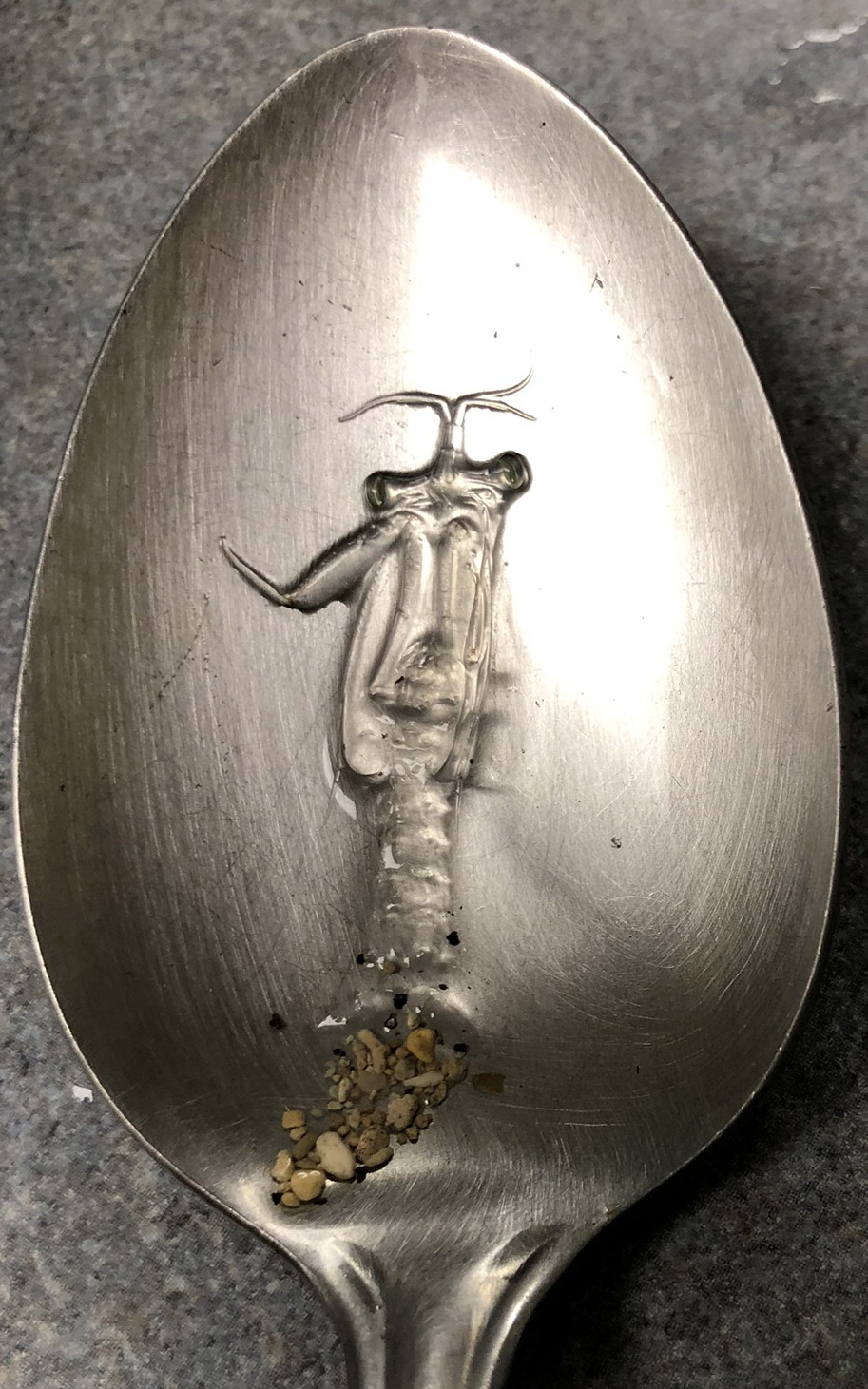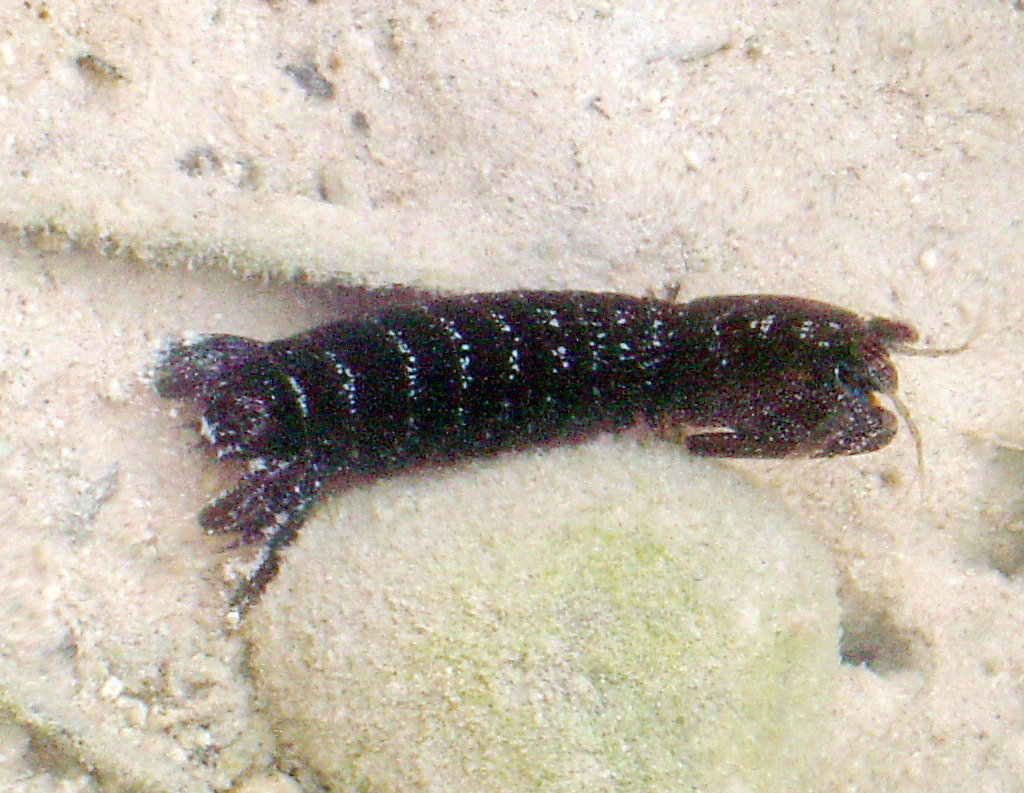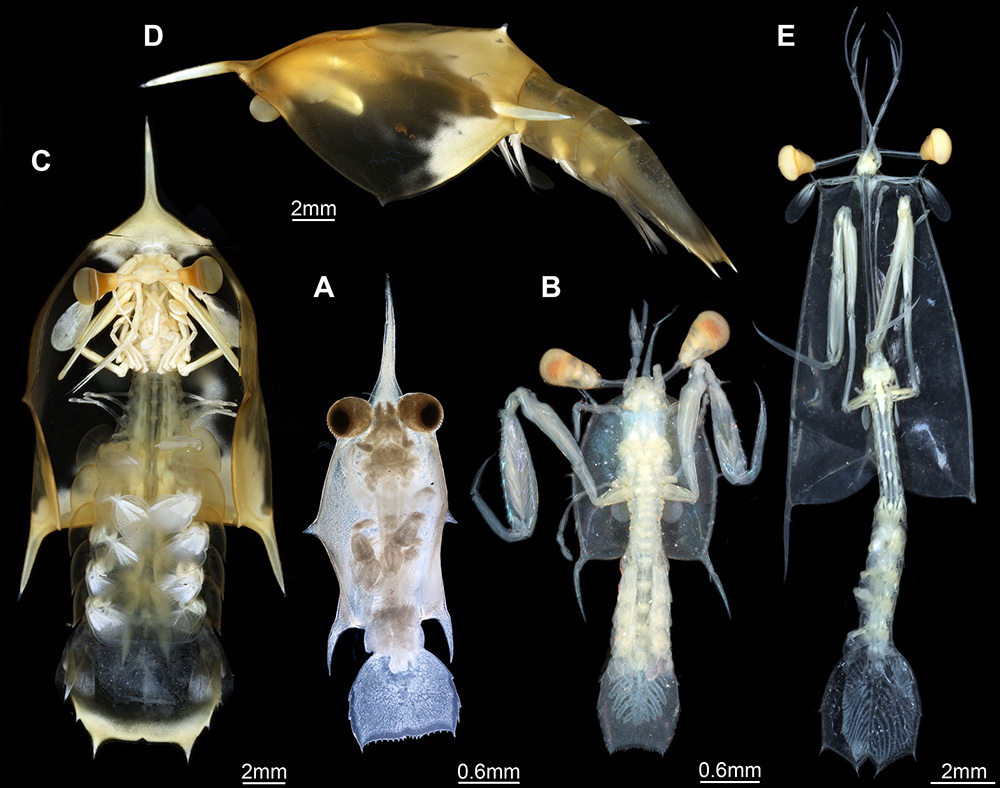July 9, 2020

One of my mantis shrimp youngsters. ©Susan Scott
Last week during my beach walk, a piece of clear glass reflected in the early morning sun. But when I picked up the “glass,” it wiggled. After a similar squirming creature appeared in the shorebreak, I rinsed out a Starbucks cup, filled it with sand and seawater, and brought my treasures home.
And treasures they were. They were baby mantis shrimp.
The two youngsters I brought to my kitchen were so transparent that unless they were moving, they were invisible. I had to dip them out with a spoon to see and photograph them.
Mantis shrimp were named after the two folding front legs that the shrimp carries cocked under the front of its body, similar to the praying mantis insect. When the meat-eating shrimp finds something good to eat, it strikes with its formidable legs.
Some mantis shrimps have razor-sharp edges on those legs, acting like little switchblades that spear or slash open their prey. Because mantis shrimp often forage on shallow reef flats, and hide beneath rubble, they sometimes cut human feet that step within striking distance. Pick up a rock that houses a hiding mantis shrimp, and you’ll understand their nickname: thumb splitters. Such injuries are rare, but explain a surprise cut on a finger or toe that you didn’t see coming.

A mantis shrimp on the reef flat, Palmyra Atoll. ©Susan Scott
Other mantis shrimp species have clublike front legs that can smash open snail and crab shells. These types are not good aquarium pets. In addition to eating their tank mates, punching mantis shrimp have been known to break aquarium glass.
Of the 500 or so mantis shrimp (scientific name Stomatopod) species in the world, Hawaii hosts at least 17, ranging from 1 inch long to 14 inches long.

This giant mantis shrimp swam next to the hull of Hokulea, moored in Bali, Indonesia. The species, found throughout the Pacific, including Hawaii, is the largest of all species. ©Craig Thomas
Mantis shrimps have remarkable vision with bulging compound eyes, and are the Einsteins of crustaceans, their brains containing learning and memory centers. Some researchers speculate that because they hunt over long distances, mantis shrimps must remember where to get food, and how to get home.
The next morning our developing shrimp impressed Craig and I by swimming around and around their sand-bottomed container. After being washed onto the beach, carried in a coffee cup, and trapped overnight in a quiche dish, these creatures pressed on, not only still alive, but full of energy.
We transferred the tiny survivors by spoon to a seawater-filled jar, which Craig pedaled on his bicycle to the Kailua boat ramp. And off the little future predators went, hopefully growing into adults, finding mates and making more mantis shrimp.

The stages of mantis shrimp growth. From Nauplius vol.24 Cruz das Almas 2016 Epub Nov 21, 2016 https://doi.org/10.1590/2358-2936e2016020
You can find mantis shrimp patrolling the ocean floor or skulking under rocks and rubble – just take care not to find them with your fingers or toes.